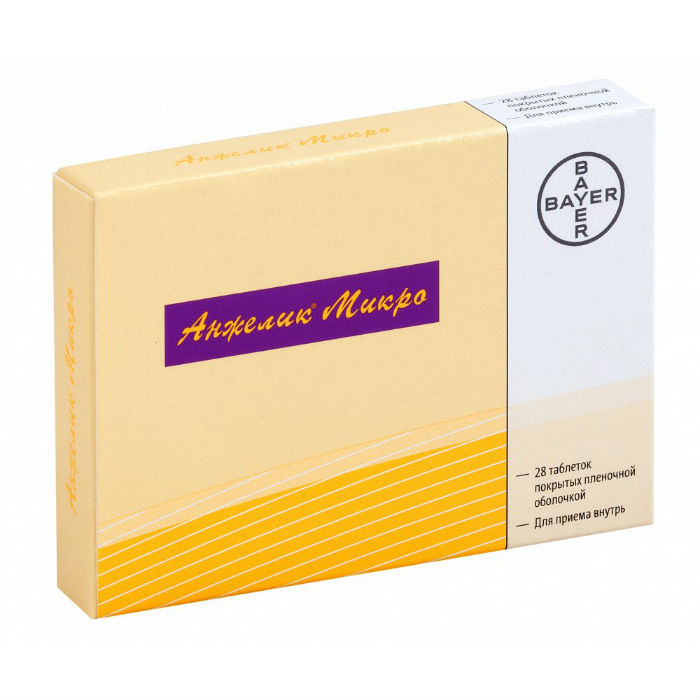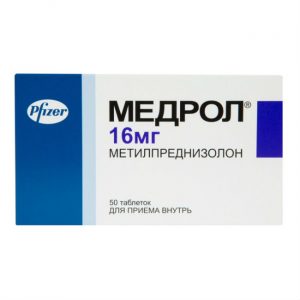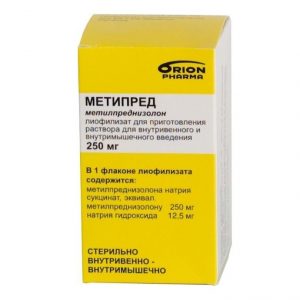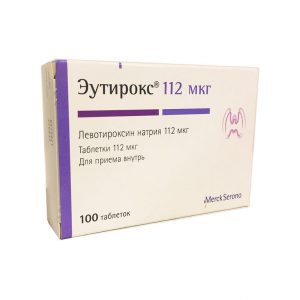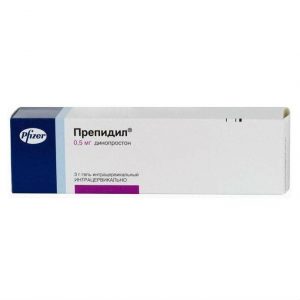Description
Release form
Tablets.
Packing
In a packing of 28 pcs.
Pharmacological action
The preparation Angelique Micro contains 17-estradiol, chemically and biologically identical to endogenous human estradiol, and the synthetic progestogen drospirenone. 17-estradiol provides hormone replacement during and after menopause. The addition of drospirenone provides control of bleeding and counteracts the development of estrogen-induced endometrial hyperplasia.
Effects of estradiol
Extinction of ovarian function, accompanied by a decrease in the production of estrogen and progesterone, leads to the development of menopausal syndrome, which is characterized by vasomotor and organic symptoms. Hormone replacement therapy (HRT) is indicated for the treatment of these symptoms.
Of all natural estrogens, estradiol is the most active and has the highest affinity (binding strength) for estrogen receptors. Target organs for estrogens include, but are not limited to, the uterus, hypothalamus, pituitary, vagina, mammary glands, bones (osteoclasts).
Other effects of estrogen include: decreased insulin and blood glucose concentrations, vasoactive effects mediated by receptors, and receptor-independent effects on vascular smooth muscle cells. Estrogen receptors have been identified in the heart and coronary arteries.
Oral administration of natural estrogens has advantages in cases of hypercholesterolemia due to a more favorable effect on lipid metabolism in the liver.
Monotherapy with estrogen has a dose-dependent stimulating effect on mitosis and endometrial proliferation. thus, it increases the incidence of endometrial hyperplasia and, therefore, the risk of developing endometrial cancer. In order to avoid the development of endometrial hyperplasia, a combination with hierogestagens is necessary.
Effects of drospirenone
Drospirenone has very similar pharmacodynamic effects to natural progesterone.
Progestogenic activity
Drospirenone is a potent progestogen with a central inhibitory effect on the hypothalamus-pituitary-gonadal system. In women of reproductive age, drospirenone has a contraceptive effect when drospirenone is administered as a single drug, ovulation is suppressed. The threshold dose of drospirenone to suppress ovulation is 2 mg / day. The complete transformation of the endometrium that had previously been exposed to estrogen occurs after taking a dose of 4 or 6 mg / day for 10 days (= 40-60 mg per cycle).
Continuous hormone replacement therapy with Angelik Micro helps to avoid the regular withdrawal bleeding that occurs with cyclic or phase HRT. During the first months of treatment, bleeding and “spotting” discharge are quite common, but over time, their frequency decreases.
Antimineralocorticoid activity
Drospirenone is capable of competitive antagonism with aldosterone. Women, which, in a clinical study, received drospirenone in addition to estradiol, peripheral edema was less likely to occur than those taking estradiol alone.
Anti-androgenic activity
Like natural progesterone, drospirenone has anti-androgenic properties.
Effect on carbohydrate metabolism
Drospirenone has neither glucocorticoid nor anti-glucocorticoid activity and does not affect glucose tolerance and insulin resistance. When using the drug Angelik Micro, glucose tolerance is not impaired.
Other properties of
Observational studies suggest that among postmenopausal women with HRT, the incidence of colon cancer is reduced. The mechanism of action is still unclear.
Indications
is hormone replacement therapy for the treatment of moderate and severe vasomotor symptoms associated with menopause in women with an unexplained uterus.
Contraindications
Taking the drug Angelik Micro is contraindicated in the presence of any of the following conditions / diseases. If any of these conditions / diseases occurs while taking Angelik Micro, you should immediately stop using the drug.
– pregnancy or lactation (see section ² ÑUse during pregnancy and during breast-feeding ² Ñ)
– vaginal bleeding of unspecified etiology
– confirmed or suspected diagnosis of breast cancer or breast cancer with a history of
– confirmed or suspected diagnosis of hormone-dependent precancerous disease or hormone-dependent malignant tumor s liver or current history (benign or malignant)
– severe liver disease
– severe kidney disease in yaschee or history or acute renal failure (before normalization of the renal function)
– acute arterial thrombosis or thromboembolism (e.g., myocardial infarction, stroke), angina
– deep vein thrombosis in the acute stage, venous thromboembolism (including pulmonary embolism) at present or in a history of
– the presence of a high risk of venous and arterial thrombosis (see the “Special Instructions” section)
– a detected predisposition to venous or arterial thrombosis, including resistance to activated protein C, antithrombin III deficiency, protein C, protein S deficiency, hyperhomocysteinemia, antibodies to phospholipids (antibodies to cardiolipin, lupus anticoagulant)
– adrenal insufficiency
– untreated hyperplasia
– porphyria
– severe hypertriglyceridemia
– hypersensitivity to the components of the drug Angelik Micro
– children and adolescents under 18
– congenital lactase deficiency, lactose intolerance, glucose-galactose malabsorption.
Caution: Angelique Micro should be prescribed with caution in the following diseases: congenital hyperbilirubinemia (Gilbert, Dubin-Johnson and Rotor syndromes), cholestatic jaundice or cholestatic pruritus during a previous pregnancy, endometriosis, uterine fibroids, diabetes mellitus (see “Special Instructions”).
It must be taken into account that estrogens alone or in combination with progestogens should be used with caution in the following diseases and conditions: the presence of risk factors for thrombosis and thromboembolism in the family history (thromboembolic complications in close relatives at a young age), the presence of risk factors for the onset of estrogen-dependent tumors (for example, relatives of the 1st degree of kinship with breast cancer), a history of endometrial hyperplasia, smoking, hypercholesterolemia, obesity, systemic lupus erythematosus, dementia, gallbladder disease, retinal vascular thrombosis, moderate hypertriglyceridemia, edema in chronic heart failure, severe hyiocalcemia, endometriosis, bronchial asthma, epilepsy, migraine, liver hemangiomas, hyperkalemia, conditions that predispose to drug use causing hyperkalemia – potassium-sparing diuretics, potassium preparations, ACE inhibitors, aphotiothein II and heparin receptor antagonists.
Use during pregnancy and lactation
HRT is contraindicated during pregnancy or during breastfeeding. If pregnancy is detected while taking the drug Angelik Micro, the drug should be immediately withdrawn.
A small amount of sex hormones may be excreted in breast milk.
Special instructions
The drug Angelik Micro is not used for contraception.
If you suspect a pregnancy, you should stop taking the pills until the pregnancy is ruled out (see section “Use during pregnancy and during breastfeeding”).
If you have or worsen any of the following conditions / diseases or risk factors, Before you start or continue taking the drug, Angelik Micro should evaluate the ratio of individual risk to the benefits of treatment, taking into account the possible need for its cancellation.
When prescribing HRT to women who have several risk factors for thrombosis or a high degree of severity of one of the risk factors, one should take into account the possibility of a mutual strengthening of the action of risk factors and the prescribed treatment for the development of thrombosis. In such cases, the total value of the available risk factors increases. In the presence of a high risk, the drug Angelik Micro is contraindicated.
Venous thromboembolism
In a number of controlled randomized and epidemiological studies, an increased relative risk of developing venous thromboembolism (VTE), i.e. deep vein thrombosis or pulmonary embolism, on the background of HRT. Therefore, when prescribing the drug Angelik Micro to women with risk factors for VTE, the ratio of risk and benefit of treatment should be carefully weighed and discussed with the patient.
High-risk factors for developing VTE include an individual and family history (the presence of VTE in immediate families at a relatively young age may indicate a genetic predisposition) and obesity with a body mass index of more than 30 kg / m. The risk of VTE also increases with age.
The question of the possible role of varicose veins in the development of VTE remains controversial.
The risk of VTE may temporarily increase with prolonged immobilization, “large” planned and post-traumatic operations, or extensive trauma. In case of prolonged immobilization or planned surgery, the drug should be discontinued 4-6 weeks before surgery, the resumption of admission is possible only after a complete restoration of the motor activity of the woman.
Discontinue treatment immediately if symptoms of thrombotic disorders appear or if they are suspected.
It is necessary to assess the ratio of individual risk and treatment benefit in women using HRT drugs in conjunction with anticoagulants.
Arterial thromboembolism
No evidence of a positive effect on the cardiovascular system has been obtained in randomized controlled trials with prolonged use of conjugated equine estrogens (CLE) and medroxyprogesterone acetate (MPA). In large-scale clinical studies of the combination of CLE and MPA, a possible increase in the risk of coronary heart disease (CHD) in the first year of use was revealed with the subsequent absence of a positive effect. In one large clinical study using only CLE, a potential decrease in the number of cases of coronary heart disease among women aged 50-59 years was found in the absence of a general positive effect among the total study population. As a secondary result, in two large-scale clinical trials using CLE, both in the form of monotsrapia and in combination with MPA, an increase in the risk of stroke by 30-40% was revealed. Therefore, it is not known whether this increased risk extends to HRT preparations containing other types of estrogens and hierogestogens or to non-oral uses.
Endometrial cancer
With prolonged estrogen monotherapy, the risk of developing endometrial hyperplasia or carcinoma increases. The addition of drospirenone prevents the development of endometrial hyperplasia caused by estrogen. If there is a history of endometrial hyperplasia, estrogens alone or in combination with gestagens should be used with caution.
Breast cancer
Clinical and observational studies have shown an increase in the relative risk of developing breast cancer in women who have been using HRT for several years. This may be due to earlier diagnosis, accelerated growth of an existing tumor on the background of HRT, or a combination of both factors. The relative risk increases with increasing duration of therapy, but may be absent or reduced when treated with estrogen alone. This increase is comparable to an increased risk of breast cancer in women with a later onset of natural menopause, as well as obesity and alcohol abuse. The increased risk gradually decreases to the usual level within a few years after the termination of HRT.
Assumptions regarding the increased risk of developing breast cancer are based on the results of more than 50 epidemiological studies (the risk varies from 1 to 2).
In two large-scale randomized trials with CLE as monotherapy or in combination with MPL, calculated risk values ² ¹ ² ¹of 0.77 (95% confidence interval: 0.59 – 1.01) or 1.24 (95% confidence interval: 1.01 – 1.54) after approximately 6 years were obtained HRT applications. Unknown Does this increased risk also apply to other HRT drugs HRT increases the mammographic density of the mammary glands, which in some cases can have a negative effect on the radiological detection of breast cancer.
When prescribing the drug Angelik Micro to women with risk factors for the occurrence of estrogen-dependent tumors (for example, relatives of the 1st degree of kinship with breast cancer), the ratio of risk and benefit from treatment should be carefully weighed and discussed with the patient.
Ovarian cancer
A study of estrogen in combination with progestin showed a statistically insignificant increase in the risk of ovarian cancer. The relative risk of developing ovarian cancer with conjugated estrogens with MPA compared to placebo was 1.58 (95% confidence interval: 0.77-3. 24) after an average observation period of 5.6 years. The absolute risk when using conjugated estrogens with MPA compared to placebo was 4 versus 3 cases per 10,000 women-years. Long-term use of estrogen-only HRT products (5 ² 10 years) has been associated with a slightly increased risk of ovarian cancer. Long-term use of combination drugs for HRT may have the same or slightly lower risk of developing ovarian cancer.
Liver tumor
Against the background of the use of sex hormones, which include hormone replacement therapy, in rare cases benign, and even less often, malignant liver tumors were observed. In some cases, these tumors led to intra-abdominal bleeding, which posed a threat to life. For pain in the upper abdomen, an enlarged liver or signs of intra-abdominal bleeding during differential diagnosis should take into account the likelihood of a liver tumor.
Gallstone disease
Estrogens are known to increase the lithogenicity of bile. The risk of developing cholelithiasis increases 2-4 times with estrogen treatment.
Dementia
There is limited clinical evidence of a possible increase in the risk of dementia in women who start taking drugs containing CLE, aged 65 years and older. As observed in studies, the risk can be reduced if the use of HRT products containing CLE is started in early menopause.
Other conditions / diseases
Discontinue treatment immediately if a migraine-like pain or a frequent and unusually severe headache occurs for the first time, as well as the appearance of other symptoms – possible precursors of a thrombotic stroke of the brain.
The relationship between HRT and the development of clinically expressed hypertension has not been established. In women taking HRT, a slight increase in blood pressure is described, a clinically significant increase is rare. However, in some cases, with the development of persistent clinically significant arterial hypertension while taking HRT, cancellation of HRT can be considered.
Potential for potassium excretion may be reduced in renal failure. Taking drospirenone does not affect the concentration of potassium in the blood plasma in patients with mild or moderate forms of renal failure. The risk of developing hyperkalemia theoretically cannot be excluded only in the group of patients, in which the concentration of potassium in the blood plasma before treatment was determined at the upper limit of the norm, and who additionally take potassium-sparing drugs.
For mild impairment of liver function, including various forms of hyperbilirubinemia, such as Dubin-Johnson syndrome or Rotor syndrome, medical supervision and periodic liver function tests are necessary.
If the liver function deteriorates, the drug Angelik Micro should be discontinued.
In case of recurrence of cholestatic jaundice or cholestatic itching, observed for the first time during pregnancy or prior treatment with sex hormones, taking Angelik Micro should be stopped immediately.
Special monitoring of women with increased triglyceride concentrations is necessary. In such cases, the use of HRT can cause a further increase in the concentration of triglycerides in the blood, which increases the risk of acute pancreatitis.
Although HRT may affect peripheral insulin resistance and glucose tolerance, there is usually no need to change the treatment regimen for patients with diabetes mellitus during HRT. However, women with diabetes should be monitored during HRT.
Some patients may develop unwanted manifestations of estrogen stimulation, such as pathological uterine bleeding. Frequent or persistent pathological uterine bleeding during treatment is an indication for the study of the endometrium in order to exclude diseases of an organic nature.
Under the influence of estrogen, uterine fibroids can increase in size. In this case, treatment should be discontinued.
It is recommended to discontinue treatment if relapse of endometriosis develops with HRT.
If there is a suspicion of prolactinoma, treatment should be ruled out before treatment. If prolactinoma is detected, the patient should be under close medical supervision (including periodic assessment of prolactin concentration).
In some cases, chloasma may occur, especially in women with a history of pregnant chloasma. During therapy with Angelic Micro, women with a tendency to chloasma should avoid prolonged exposure to the sun or ultraviolet radiation.
The following conditions / diseases can occur or worsen against the background of HRT, and women with these conditions / diseases should be monitored by a doctor during HRT: epilepsy benign breast tumor bronchial asthma migraine porphyria otosclerosis systemic lupus erythematosus, small chorea.
In women with hereditary forms of angioedema, exogenous estrogens can cause or worsen symptoms of ayioneurotic edema.
Preclinical safety data
Preclinical data obtained from standard studies for toxicity with multiple doses of the drug, as well as genotoxicity, carcinogenic potential and toxicity to the reproductive system, do not indicate a particular risk to humans. However, it should be remembered that sex hormones can promote the growth of some hormone-dependent tissues and tumors.
Medical examination and counseling
Before starting or resuming taking the drug Angelik Mikro, you should familiarize yourself with the patient ² ¢s medical history and conduct a general medical and gynecological examination. The frequency and nature of such examinations should be based on existing standards of medical practice with the necessary consideration of the individual characteristics of each patient (but not less than 1 time in 6 months) and should include measurement of blood pressure, assessment of the condition of the mammary glands, abdominal organs and pelvic organs, including cytological examination of the cervical epithelium.
Effect on laboratory results.
Taking sex hormones can affect the biochemical parameters of liver, thyroid, adrenal and kidney function, plasma concentration of transport proteins, such as globulin that binds sex hormones and lipid / lipoprotein fractions, indicators of carbohydrate metabolism, coagulation and fibrinolysis.
Angelique Micro does not adversely affect glucose tolerance.
Impact on ability to drive vehicles and mechanisms
Not identified.
Composition
For 1 tablet:
Core
Active ingredients: estradiol hemihydrate (micronized) in terms of estradiol 0.500 mg, drospirenone (micronized) 0.250 mg
Excipients: lactose monohydrate – 50.450 mg, corn starch -14.400 mg, corn starch pregelatinized – 9.600 mg, 4.6 million mg mg
Shell
Varnish yellow 2.0000 mg or (alternatively): hypromellose (5 cP) 1.0112 mg, macrogol-6000 0.2024 mg, talc 0.2024 mg, titanium dioxide 0.4640 mg, iron dye yellow oxide 0.1200 mg.
Dosage and administration of
If a woman does not take estrogen or switches to Angelik Micro from another combination drug for continuous use, she can start treatment at any time.
Patients who switch to Angelik Micro with a combined preparation for cyclic HRT regimen should start taking it after the end of the current cycle of therapy.
Each pack has a 28-day intake.
Take one tablet daily. After taking 28 tablets from the current package, the next day they start taking tablets from a new package of the drug Angelik Micro (continuous HRT), taking the first tablet on the same day of the week as the first tablet from the previous package.
The tablet is swallowed whole with a small amount of liquid. Tablets are taken regardless of the meal. The time of day when a woman is taking the drug does not matter, however, if she started taking the pill at any particular time, she should adhere to this time further.
A forgotten pill should be taken as soon as possible. If after the usual time of administration more than 24 hours have passed, an additional tablet should not be taken. If several tablets are missed, bleeding from the vagina may develop.
Side effects of
Most often with the use of the drug Angelik Micro were observed adverse drug reactions (NLR) such as breast tenderness, genital bleeding, abdominal pain (less than 2% of patients).
Irregular bleeding usually disappears with prolonged therapy. The frequency of bleeding decreases with increasing duration of treatment.
Serious adverse reactions include arterial and venous thromboembolic complications and breast cancer.
NLR described in clinical trials using the drug Angelik Micro are presented in the table below. The following concepts are used to determine the frequency: very frequent (> 1/10), frequent (from> 1/100 to <1/10), infrequent (from> 1/1000 to <1/100) and rare (from> 1 / 10,000 to <1/1 000). Class of organ systems Very frequent Frequent Infrequent Mental disorders emotional lability Disorders of the nervous system migraine Disorders of the vessels venous and arterial thromboembolic complications * Disorders of the gastrointestinal tract pain in the mammary gland and of the breast mammary glands (including discomfort in the mammary glands) genital tract bleeding cervical polyp breast cancer ** Adverse events in clinical trials odirovali using MedDRA dictionary. Different MedDRA terms reflecting the same medical phenomenon have been grouped into one adverse event to avoid duplication or ambiguity in describing the true effect. * The term venous and arterial thromboembolic complications includes the following medical terms: peripheral deep vein occlusion, thrombosis and embolism / pulmonary vascular occlusion, thrombosis, embolism and myocardial infarction / myocardial infarction / cerebral infarction and stroke, with the exception of hemorrhagic. ** Data on the relationship with the use of the drug were obtained from post-marketing observations. Frequency data were obtained from clinical studies using the drug Angelik Micro. Also, for venous and arterial thromboembolic complications, breast cancer and migraine, see the Contraindications and Special Instructions sections. In one placebo-controlled study, adverse reactions were reported with a frequency of> 2%: headache (6% of patients, taking the drug Angelic Micro and 5% of patients receiving placebo), nausea (3.3% and 1.1%, respectively), diarrhea (2.2% and 0.6%, respectively), vulvovaginal candidiasis (5.5% and 0.6%, respectively), peripheral edema (2.2% and 1.1% respectively).
Adverse reactions that occur in isolated cases, or symptoms that develop very long after the start of therapy and which are considered to be associated with the use of drugs from the group of combined agents for continuous hormone replacement therapy, are listed below:
– liver tumors (benign and malignant )
– hormone-dependent malignant tumors or hormone-dependent precancerous diseases (if it is known that the patient has similar conditions / diseases, this is a contraindication to the use of the drug Angelik Mikro)
– gallstone disease
– dementia
– endometrial cancer
– arterial hypertension
– liver dysfunction
– hypertriglyceridemia
– changes in tolerance to glucose disease or
– prolactinoma
– chloasma
– jaundice and / or pruritus associated with cholestasis
– the onset or worsening of conditions / diseases for which the relationship with the use HRT is not exactly proven: epilepsy benign breast diseases bronchial asthma porphyria systemic lupus erythematosus otosclerosis small chorea
– in women with hereditary angioedema, exogenous estrogens can aggravate
symptoms – hypersensitivity (including symptoms such as rash and urticaria).
For more information about serious adverse events associated with hormone replacement therapy, see the Special Instructions section.
Drug Interactions
Long-term drug treatment, inducing liver enzymes (for example, some anticonvulsants and antimicrobials) can increase the clearance of sex hormones and reduce their clinical effectiveness, which is manifested by irregular bleeding. A similar property to induce liver enzymes was found in hydantoins, barbiturates, primidone, carbamazepine and rifampicin, the presence of this feature is also assumed in oxcarbazepine, topiramate, felbamate and griseofulvin. The maximum induction of enzymes is usually observed no earlier than 2-3 weeks, but then it can persist for at least 4 weeks after stopping the drug.
In rare cases, against the background of concomitant use of certain antibiotics (for example, penicillin and tetracycline groups), a decrease in estradiol concentration was observed.
The main metabolites of drospirenone are formed in plasma without the participation of the cytochrome P450 system. Therefore, the effect of inhibitors of the cytochrome P450 system on the metabolism of drospirenone is unlikely. However, CYP3A4 inhibitors (e.g. cimetidine, ketoconazole, etc.) can inhibit estradiol metabolism.
Interaction of the drug Angelik Micro with other drugs
Based on in vitro interaction studies, as well as an in vivo study on female volunteers taking 3 mg of drospirenone per day in combination with omeprazole, simvastatin or midazolam, we can conclude that the clinically significant interaction of drospirenone with cytochrome P450 on the metabolism of other medicinal substances is unlikely.
Pharmacodynamic interaction with antihypertensives and non-steroidal anti-inflammatory drugs (NSAIDs)
An increase in the concentration of serum potassium with the combined use of Angelique Micro and non-steroidal anti-inflammatory drugs (NSAIDs) or antihypertensive drugs is unlikely. The combined use of the above three types of drugs can lead to a slight increase in the concentration of serum potassium, more pronounced in women with diabetes.
Interactions with alcohol
Excessive alcohol consumption during HRT can lead to an increase in the concentration of circulating estradiol.
Overdose
Acute toxicity studies have not identified a risk of acute side effects when administered accidentally in excess of the daily therapeutic dose.
In clinical studies, the use of drospirenone up to 100 mg or combination estrogen / gestagen preparations containing 4 mg estradiol was well tolerated.
Symptoms that can be observed with overdose: nausea, vomiting, bleeding from the vagina.
No specific antidote, treatment symptomatic.
Storage conditions
At a temperature not exceeding 30 ° C. Keep out of reach of children.
Shelf life
3 years.
Active ingredient
Drospirenone, Estradiol
dosage form
tablets
Prescribing
Prescribing
For postmenopausal women, For adults as prescribed by a doctor, For women in menopause
